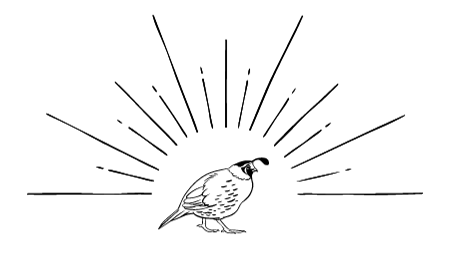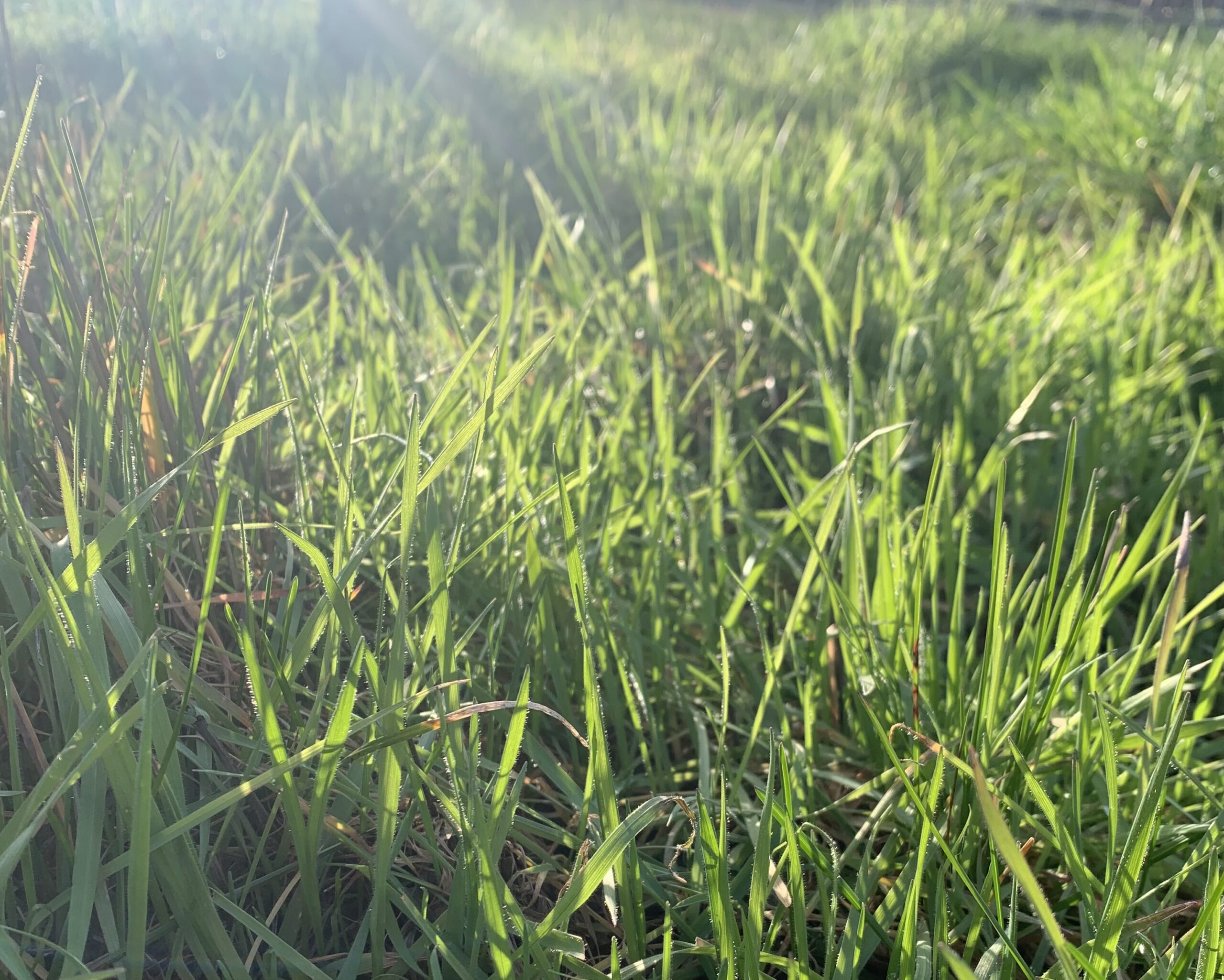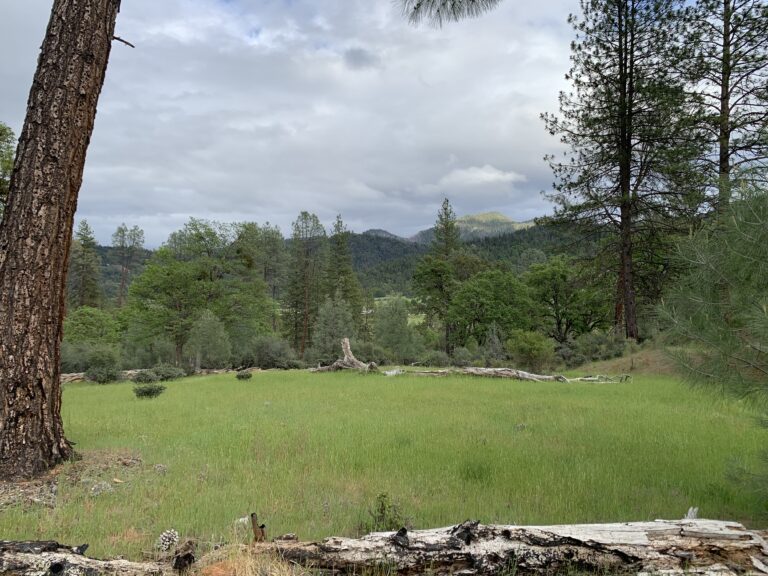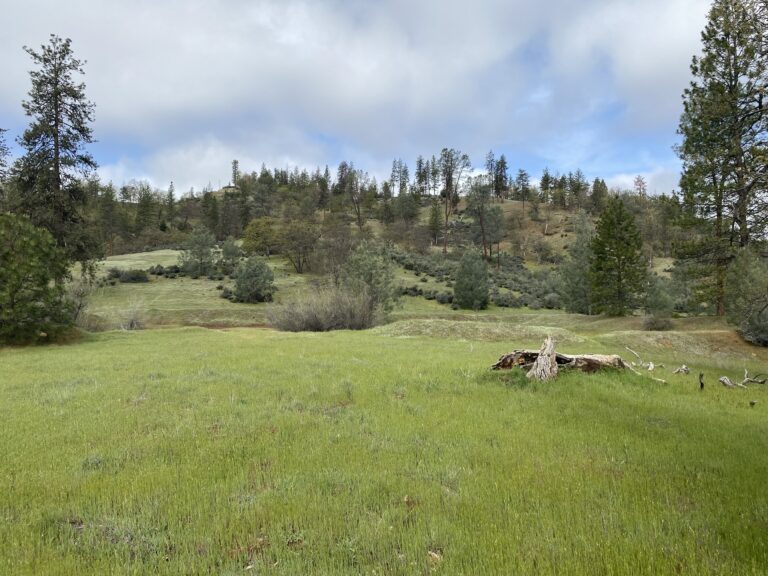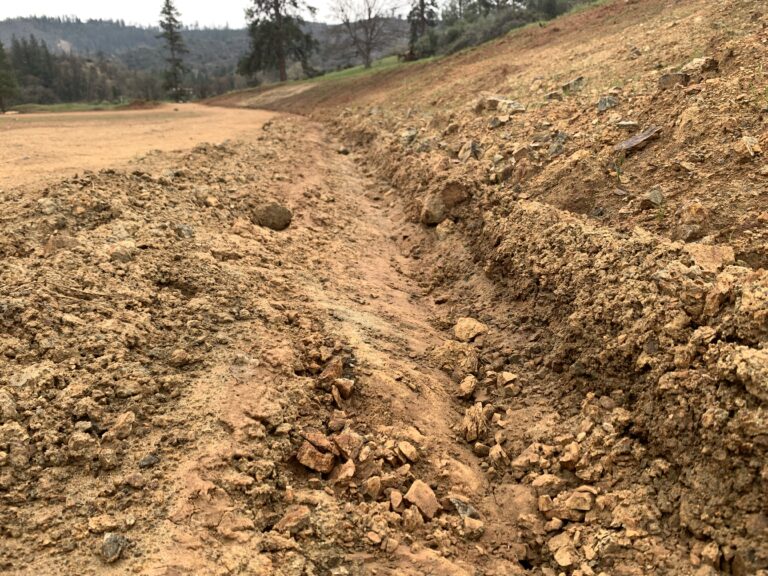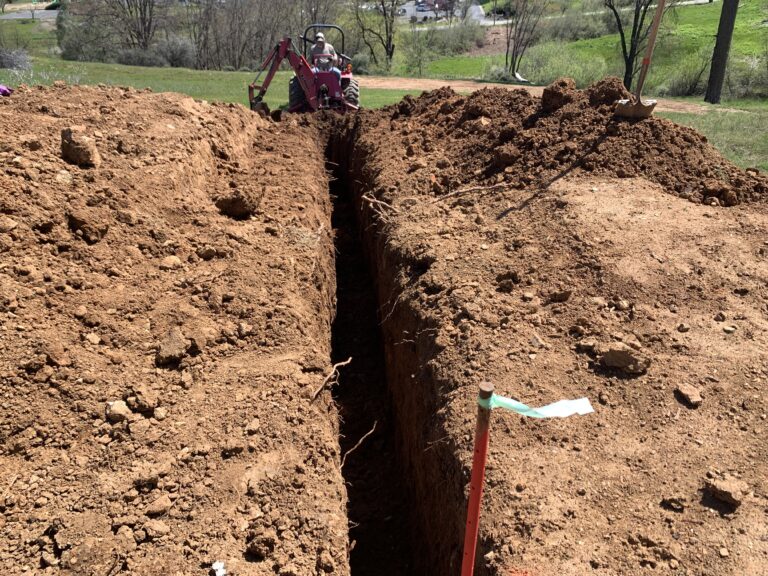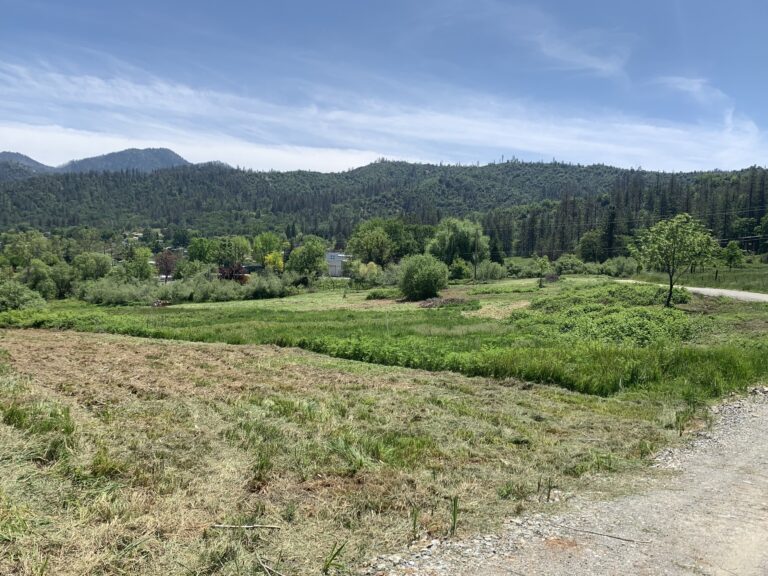Reclaiming Pasture: Managing Brush and Invasive Plants While Encouraging Forage Species Growth
Our process for clearing decades-old brush, managing invasive plants, and encouraging dominance of desirable forage species in pasture.
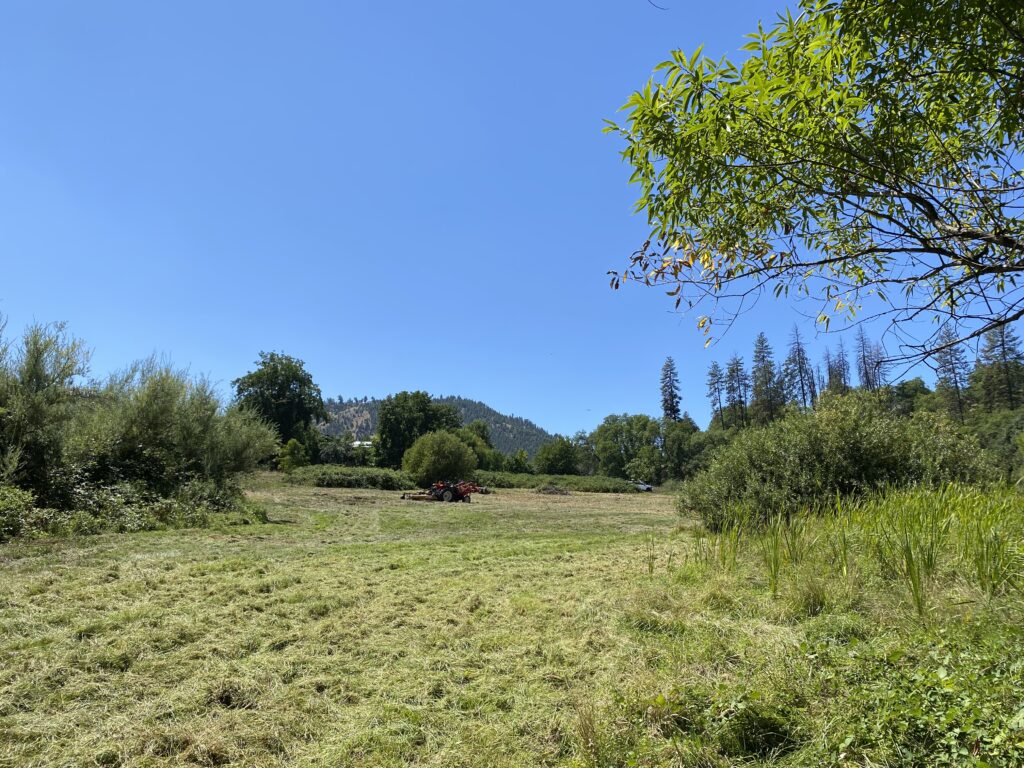
Reclaiming our pasture has, and still is, very much a work in progress. This process will look different for every pasture, as there is so much variability in the unique characteristics of each pasture environment. Soil type, soil quality, dominant plant species and climate, just to name a few.
In this post, we’ll share the steps we’ve taken to reclaim our pasture, what’s worked and what hasn’t, and what we have plans for in the future.
In order to explain this process, let’s get familiar with what we’ve been working with. We have a wetland pasture that, prior to us purchasing the property, had been neglected for decades. This allowed for many non-native, invasive species to dominate. In particular, Himalayan blackberry, various types of thistles, and our toughest opponent, poison hemlock. Much of the pasture was overgrown with thickets of willows, berry briars and wild rose. Years of neglect had allowed for a tangled mess of woody debris and fresh green growth, inhibiting desirable native grass species.
In areas that had not been overtaken, lush areas of native grasses were thriving in the rich, alluvial soil. A walk through hip high grasses told us there was potential for a beautiful, productive pasture. Our plan was simple: get rid of the thick brush, eliminate invasive species as much as possible, and encourage the spread of desirable forage species.
This post contains affiliate links. As an Amazon Associate I earn from qualifying purchases.
Clearing Decades-Old Brush
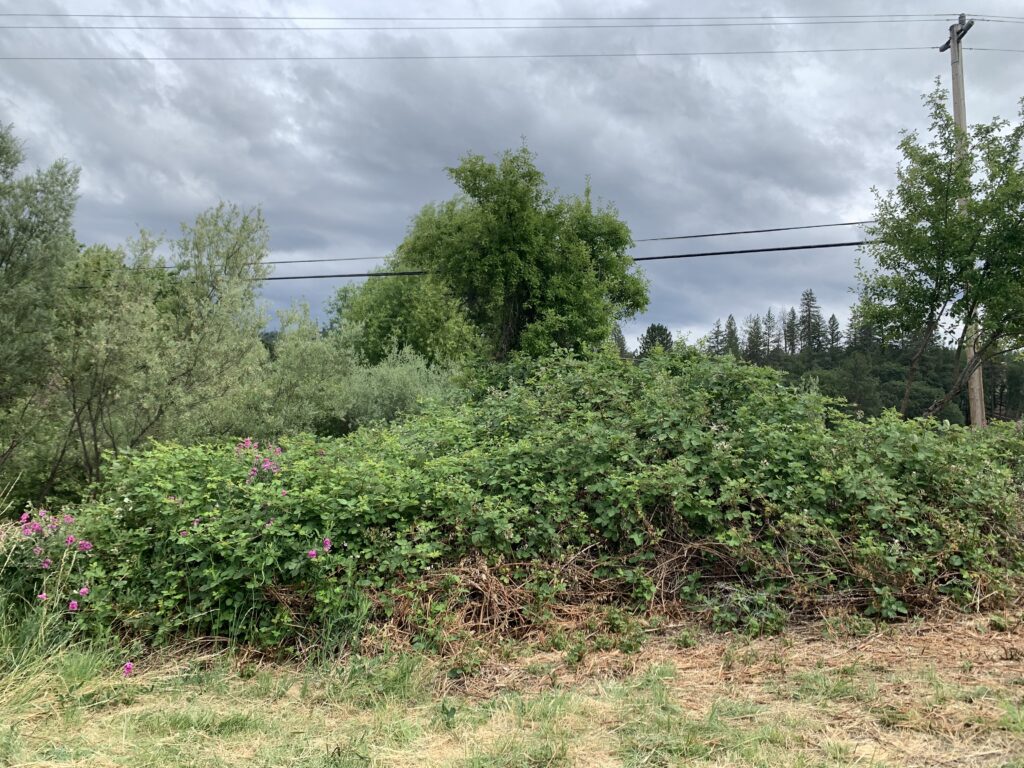
First, we tackled the thickets of willows, berries and roses the old-fashioned way – by hand. There are several reasons we decided that clearing by hand was better in this case. For one, we didn’t own any equipment, or have the money to spend on renting equipment. Second, due to long-term neglect, there were small trees entangled in the brush that were too large for a tractor with a mower attachment. Furthermore, there is much less disturbance to the soil when clearing by hand compared to heavy equipment use.
The property lines on the south and east side of our property were a huge mass of brush thickets. Using hand tools such as large loppers, McLeod fire tools, and chainsaws, we chipped away at opening up the fence line. We started this project in the heat of the summer; since then, we’ve found that it’s much easier to do this work during the cold season. Brush piles up very quickly, so it’s nice to burn as you go.
However, to our surprise (and relief!), this process was not as bad as we thought it would be. We actually made progress very quickly.
Our Best Tips for Clearing Brush by Hand
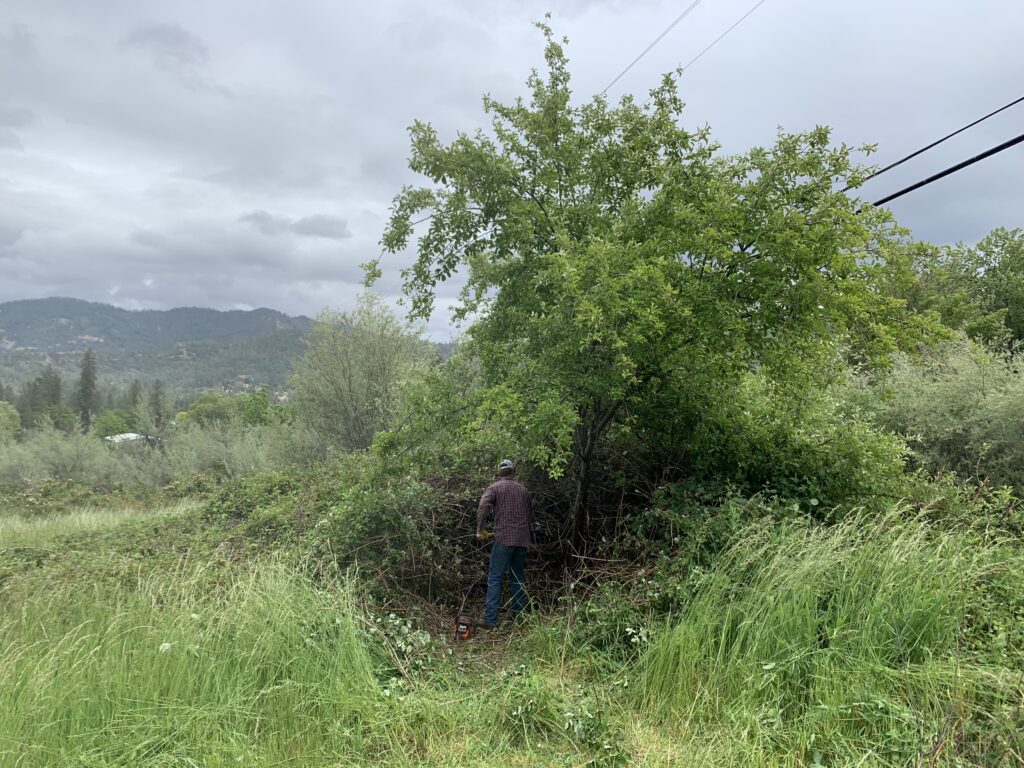
- Don’t start in the heat of summer, if you can help it. If you are tackling brush in the summer, you’ll probably end up doing more work trying to pile the brush. It’s very easy to work yourself into a corner with brush piles! During burn season, you can just keep one burn pile going continuously and not have to work so hard dragging the brush to new piles (which always get further and further away from where you’re working!)
- Work with a partner. One of us would use the McLeod to rake down the massive berry vines, while the other would use the loppers to lop up all the vines. Once we got enough cleared to expose the larger brush and small trees, we’d use the chainsaw. Working with a partner also keeps your motivation up since you’ll make progress more quickly. Working alone really makes the process seem daunting.
- Work in short periods. Don’t try to work sunup to sundown on this! Our longest work days were 4 or 5 hours, at most. Any longer and you risk fatigue and burn out – it’s labor-intensive work. Don’t worry, if you’re consistent, you’ll still see plenty of progress. We only had weekends to work, and we cleared the entire fence line in a matter of weeks.
- Just start! Clearing thick brush by hand can seem like a huge feat. But by just getting started, you’ll realize how much progress you can make, and it will motivate you to keep going. It’s really rewarding to see all your hard work pay off!
- Don’t listen to people telling you that you’re crazy. We got so many comments that we were crazy to attempt to clear that mass of brush by hand and that it was a job for heavy equipment. But once you get started, it’s really not that bad. And the result of hand work looks so much better than that of tractors and masticators, in our opinion.
Maintaining the cleared areas hasn’t been as challenging as we thought it would be. Willow, blackberry, and wild rose are all resprouting species, so they do come back the next growing season. So far, we’ve managed it mostly by using a tractor mower, and a weed trimmer in areas that the tractor can’t access.
Long term, we plan to have our livestock manage it for us. Goats should keep the regrowth of these species in check, as browsing woody vegetation is their specialty. For the areas outside the fence, a quick weed wack once or twice a year should do the job.
Managing Invasive Plants
In addition to maintaining the areas that we’ve cleared, managing invasive plants has been an important piece of our pasture restoration. Far from complete, it has been the most challenging aspect of this project so far. We have several undesirable species that have gained a grip on the pasture over the past few decades. But the most tenacious invasive, by far, is poison hemlock.
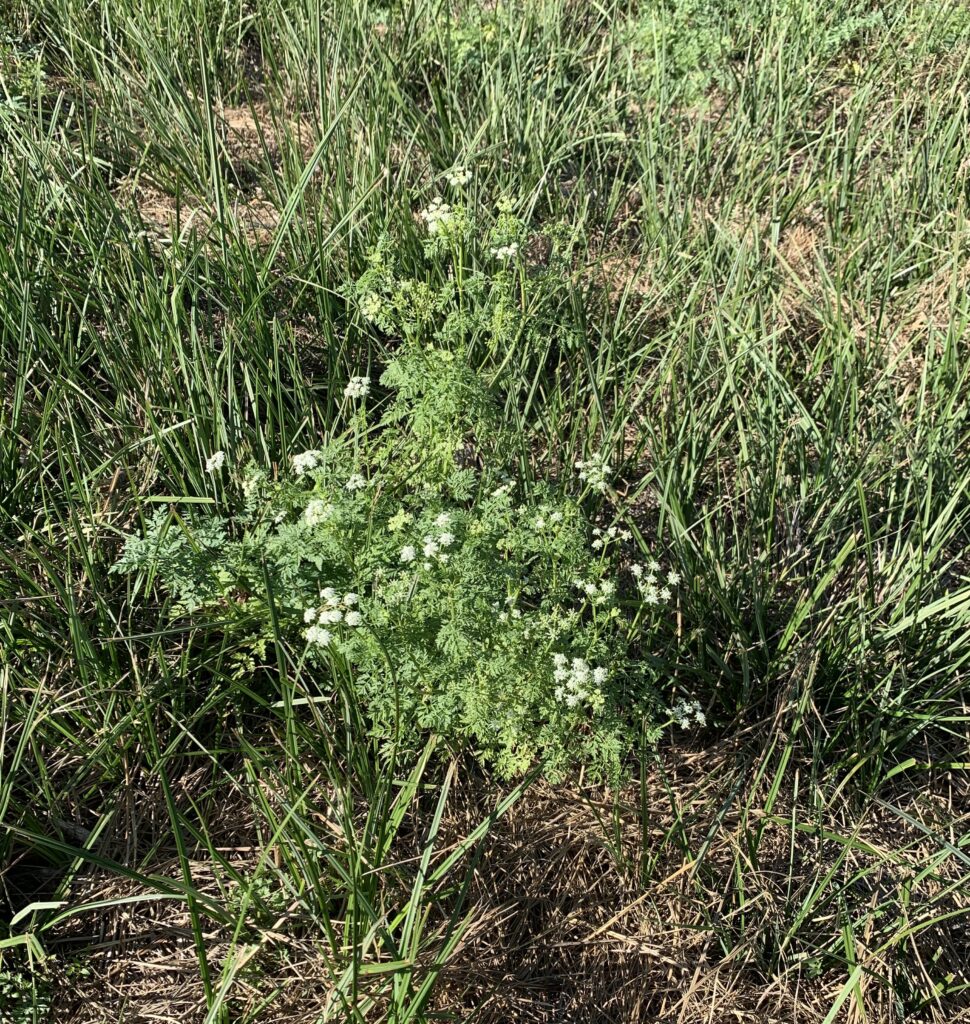
Just a quick Google search will tell you that poison hemlock, as the name suggests, is highly toxic. All parts of the plant are poisonous, especially when ingested. Any form of contact can cause trouble, such as inhalation or contact with the skin. It’s yucky stuff. It’s also quite vigorous – it grows rapidly and has no trouble spreading. You can see why eliminating poison hemlock as much as possible and preventing the spread is quite crucial in the pasture setting.
Invasive plant management techniques are broken down into four main categories: physical, mechanical, biological, and chemical. Not all of these categories can be applied to any situation, however. Each invasive plant and the environment that it is dominating is unique, so many factors have to be taken into account. An example of physical management would be hand-pulling or burning; mechanical management could be mowing or masticating. Biological management refers to the use of an organism that exclusively feeds on the targeted species, and chemical management refers to the use of herbicides to control the invasive plant.
Clearly, biological management is not an option to control poison hemlock, since it is toxic to all species, at least as far as we know. Mechanical management just isn’t effective on poison hemlock, since it just comes right back after mowing (with vigor!). However, we have experimented with mechanical, physical, and chemical control measures.
So far, we’ve found that an integrated approach to managing and eliminating poison hemlock in our pasture has worked the best.
Our Experience with Managing Poison Hemlock
Physical management by way of hand-pulling is effective, with a few caveats. First, we don’t want the poison hemlock touching our skin, so gloves and long sleeves are a must. Second, the tap root of these plants is so long that it can be difficult to get the whole thing, but it’s essential for success. Targeting smaller plants in wet areas makes for easy pulling (plus, it’s about the only method that makes sense for wet areas). Also, this method makes much more sense for a few plants here and there, rather than dense infestations.
Chemical management of poison hemlock has proven to be the most successful for heavily infested areas. Although we’d really rather not use any chemical treatments on our land, it has been a great tool for this specific circumstance. In areas that we’ve treated that were completely overtaken by the hemlock, we’ve seen only a few plants come back the next year (most likely from seed stored in the soil). By the way, we’ve read that seed can last 3 to 5 years in the soil, so if you’re battling poison hemlock or a similar invasive, hang in there!
Chopping poison hemlock (by way of either hoe or shovel, or mowing), does not work to eliminate the plant. It probably makes it grow even faster. But we have prevented the plants from spreading seed by cutting the flowers before they go to seed. We do think this has been a good management tool for us for plants that we haven’t gotten to yet with either hand-pulling or herbicide. Not the best method, but at least we’re not allowing more seed to drop.
We’d like to experiment with smothering, which is another physical management technique. Basically, covering the plants and soil with a tarp or weed cloth to prevent the plants from growing. Clearly this only makes sense in areas that are completely dominated by poison hemlock. We wouldn’t want to use this method in areas that the hemlock is mixed in with other species, as it will smother everything. But a more hands off approach, especially given the toxicity of poison hemlock, would be nice.
Encouraging Desirable Forage Species
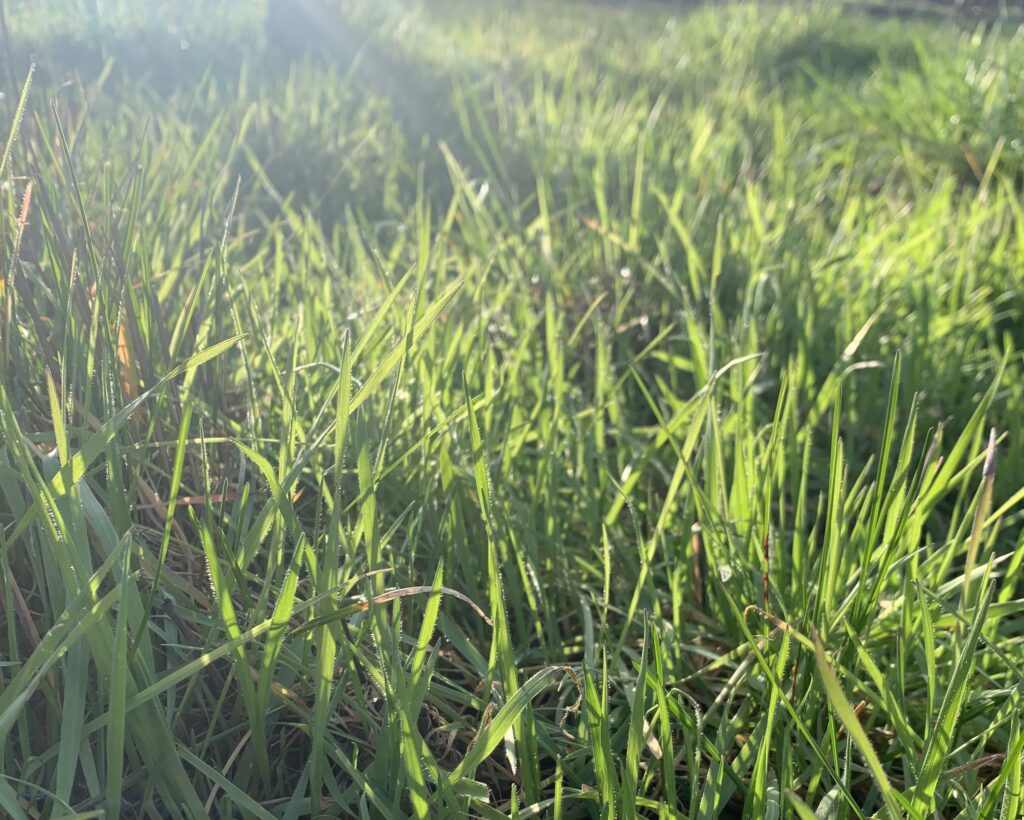
The final phase in our three-step approach is encouraging the growth and spread of desirable forage species. We have seen that the native grass and forb species in our pasture are pretty resilient when given the chance, so just opening up the areas that were too choked in with brush has really helped.
We’ve experimented with several methods to encourage desirable species. First, when done at the right time, mowing can encourage healthier plants and more vigorous growth. It may seem counterintuitive; one might think that letting the grass go to seed would be best. However, keeping grasses in the “adolescent” stage actually encourages more growth and spread.
We have also successfully transplanted grasses. This is more of a byproduct than an actual method – we are not out there transplanting clumps of grass as a management technique. Rather, when we have to remove grass in order to plant a tree, dig a ditch, etc., instead of throwing it out we transplant it. And it’s actually been really successful.
We’ve learned, through experience in our pasture and research, that the key to pasture health is covering the soil. Exposed soil is not healthy for a natural ecosystem; it really just opens the door for undesirable species to come in and take hold. Given this knowledge, we are really excited to experiment more with cover crops as a management tool to cover exposed areas and improve soil health.
This year we will be diving into more planting techniques and cover crop varieties, as well as experimenting with other forage species.
Although this is a very specialized process for each pasture environment, we hope this encourages you in improving pasture on your homestead. If you found this post helpful, please take a minute to leave a comment, or share with a friend. Thanks for reading!
